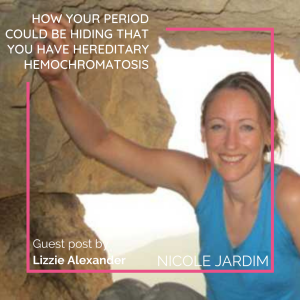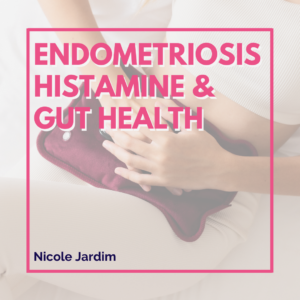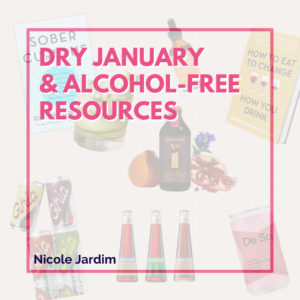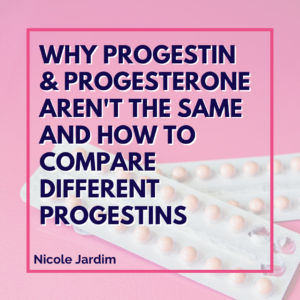Written by my Spring 2019 apprenticeship program participant, Lizzie Alexander, this post discusses the implications of hemochromatosis, an underdiagnosed disease in women of all ages.
A year ago, my husband Pete was diagnosed with hereditary hemochromatosis (HH) after getting septicaemia in Kazakhstan after an Ironman Race. Though he made a full recovery, he suffered from fatigue he’d not had before. The doctor found his iron storage levels were very high and rising fast, which then prompted further investigations and a diagnosis of hereditary hemochromatosis.
What has this got to do with women’s health and periods?
As a scientist, a ‘warrior’ of endometriosis, and a health coach, I love to research things until I understand how they work, the causes, and how you can help yourself. I have learned a lot through supporting Pete on his journey.
I want more people to be aware and understand this extremely common, serious disease because it is one of the most underdiagnosed autosomal diseases (1), especially as diagnosis in menstruating women is very low (2).
What Is Hemochromatosis?
HH is a medical condition that is caused by a faulty or abnormal gene that results in long term excessively increased absorption of dietary iron, which is then stored within the body causing an overload of iron. It is one of the most common European genetic disorders but was only discovered in 1996 (3).
Iron is an important mineral needed to make haemoglobin in red blood cells (4); the rest is stored in the liver, with smaller amounts in other organs and body tissues. There is no natural mechanism for getting rid of unwanted iron once absorbed, which is a problem.
People with HH absorb twice as much iron as normal. Prolonged high levels of iron is toxic for the body, causing severe conditions from liver cancer to heart attacks, to chronic conditions such as fatigue, arthritis, and diabetes. HH is potentially life-threatening if iron levels remain high and untreated, however, it can be treated effectively if diagnosed early.
Treatment for Hemochromatosis
HH is typically treated by removing iron from the body by ‘phlebotomy.’ Regular blood loss stimulates the creation of more blood, which requires iron, therefore releasing further iron from storage.
Nutritional awareness can be used to reduce the absorption of iron—particularly useful once in the maintenance range ( > 50 ng/mL). We have found this to be very effective.
There are two key actions: One is food combining (e.g., with calcium and tea) or avoiding (e.g., vitamin C) with iron rich foods to ensure less iron is absorbed; the other is to add foods that are iron binders (e.g., foods high in polyphenols). Following a healthy lifestyle by avoiding the regular consumption of refined sugars and alcohol, and eating a balanced diet will also improve liver health.
Who Does It Affect and How Do You Know?
HH occurs in both men and women. The build-up of iron happens slowly with symptoms appearing around 30 or 40 years old. In women, this is commonly closer to 50 years old; the delay in diagnosis is considered to be because women lose iron through their monthly period.
For many, the lifetime build-up of iron is quite small and does not cause clinical problems. I believe these differences could also be associated with differences in diet, lifestyle, and overall health of each individual.
Iron overload symptoms include:
- tiredness or lack of energy
- weakness in your limbs
- mottled bronzing skin colouration
- joint pain in mainly the knuckles and joints of the first two fingers
- stomach pain
- loss of sex drive
- possible impotence or early menopause
- evidence of liver damage from scarring and cirrhosis
- cardiomyopathy
- type 2 diabetes
- possible mental confusion, mood swings, and depression.
The key is getting a diagnosis, which can be difficult, as many of the symptoms overlap with various other conditions and diseases. Many people may never be diagnosed but have suffered from secondary conditions, such as liver fibrosis, cirrhosis and cancer, pancreatic cancer, diabetes, dysfunction of sexual glands, arthritis, and heart disease.
Women and Hemochromatosis
Is your period hiding this disease? Is there any way you could know you have it before reaching menopause and therefore prevent it from getting worse?
Yes, it is a possibility, particularly, as HH is known to affect the endocrine system. Women’s health is not simple, and it would appear that many women are being wrongly assessed for HH—something that Dr. Kristina Lewis, ND of ‘Hemochromatosis Help’ also believes (5). Do iron storage levels rise significantly once menstruation stops? Or are their other possibilities worth considering, such as:
- Difficulty in differentiating between hormonal symptoms?
- Are doctors more likely to listen to men than women?
- Are women more stoic and less likely to complain?
- Is iron loading different from one person to the next?
There appears to be a lack of research and understanding of this disease in women, particularly pre-menopause.
For women, symptoms are often blamed on hormones, whether they are menstruating, pre-, during or post-menopause. Hormone treatment is mostly given either as the contraceptive pill or Hormone Replacement Therapy, without questioning why they might be feeling the way they are.
I have found very little research on younger women with this disease. Potentially because of the assumption that all women have periods and get pregnant, and therefore those with this gene mutation will not suffer until post-menopause.
On numerous HH forums there are younger women (in their 20s and 30s) who have been diagnosed with this disease, and believe that though their period is a ‘natural blood let,’ it only loses about 10% (average period ca. 40-50 ml) compared to a phlebotomy bleed (ca. 400-500 ml). Is there something in this?
Women with No or Light Bleeds
Many teenage girls and women these days are on the contraceptive pill for an extended time, either with a false bleed or no bleed. You would expect iron storage to accumulate quicker in these cases. Equally, this would be the case for women with light and irregular periods, chronic amenorrhea, and those that do not get pregnant (as pregnancy requires a lot of iron).
This group of women are most likely to exhibit symptoms of HH before menopause. Unfortunately, the symptoms could overlap with a huge array of other conditions, in particular with the hormonal imbalances they are likely already experiencing by not having an optimum cycle.
Women with Heavy Bleeds
Those women suffering from heavy periods, endometriosis, fibroids and other growths will need more iron to create more blood.
A woman with HH is therefore likely to only increase their iron stores slowly. In addition, women with endometriosis have endometrial cells growing outside of the womb, which ‘bleed’ each month, potentially resulting in painful scar tissue storing iron—this is the case with ovarian endometrial growths (6). Could someone with endometriosis and HH have worse symptoms than someone without HH? And would knowing they had HH partially help their pelvic pain?
Listen to Your Body
Women are all different, whatever stage of life we are in. Yes, most certainly our periods could be hiding HH. The key lesson is that we need to tune in and listen to our bodies, and the health of our period is often the first sign of imbalance. If we think we have a problem with our health, please do not think it is normal—seek advice and do not take no as an answer. Listen to your body’s whispers, not the screams.
If you are concerned, a great place to find further information is at Hemochromatosis Help: https://hemochromatosishelp.com/hemochromatosis-women/.
Sources:
- https://www.ncbi.nlm.nih.gov/pmc/articles/PMC1773286/
- https://europepmc.org/backend/ptpmcrender.fcgi?accid=PMC1022781&blobtype=pdf
- https://www.ncbi.nlm.nih.gov/pubmed/30798813
- https://www.britishlivertrust.org.uk/liver-information/liver-conditions/hemochromatosis/
- https://hemochromatosishelp.com/hemochromatosis-women/
- https://www.ncbi.nlm.nih.gov/pmc/articles/PMC4633839/
***********
About Lizzie
 Lizzie Alexander, PhD, is a Certified Women’s Health Coach, Holistic Massage Therapist and founder of Sisu Holistic Health. Lizzie’s mission is to help women with endometriosis, particularly those who desperately want to have a family. She helps her clients to thrive through sustainable lifestyle and nutritional shifts, so they can live without pain and fear; these changes improve fertility, giving their body the best chance of conceiving their dream baby. She is an Endometriosis warrior, entrepreneur, a mother of one, wife to a hemochromatosis hero, and currently lives in the UK. You can find more info on her website.
Lizzie Alexander, PhD, is a Certified Women’s Health Coach, Holistic Massage Therapist and founder of Sisu Holistic Health. Lizzie’s mission is to help women with endometriosis, particularly those who desperately want to have a family. She helps her clients to thrive through sustainable lifestyle and nutritional shifts, so they can live without pain and fear; these changes improve fertility, giving their body the best chance of conceiving their dream baby. She is an Endometriosis warrior, entrepreneur, a mother of one, wife to a hemochromatosis hero, and currently lives in the UK. You can find more info on her website.
[/fusion_text][/fusion_builder_column][/fusion_builder_row][/fusion_builder_container]




1 thought on “How Your Period Could be Hiding that You Have Hereditary Hemochromatosis”
I was diagnosed with HFE via genetic testing, it’s in my chart, but my iron and ferritin levels are “normal”. I’m a 35 yo female, and I’m wondering if what you describe above explains my test results. I have my levels checked once per year because of the genetic testing, but I can’t recall if I actually “have” HFE yet. It’s been a few years since I’ve seen the hematologist. I do have other symptoms, but they may be attributed to other conditions. I’ll have to look more into this! Thanks!